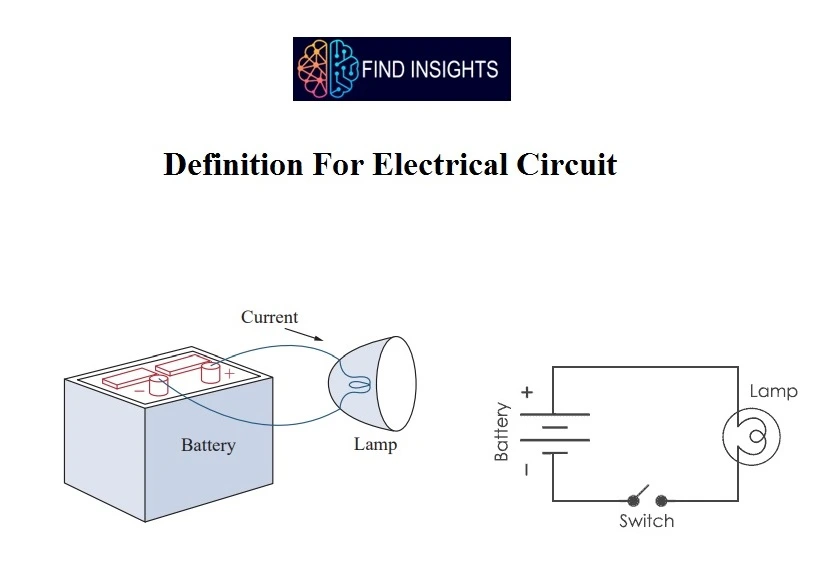
Basics of Electrical Circuits
An electric circuit is an interconnection of electrical elements. Electric circuits are used in numerous electrical systems to accomplish different tasks. In this article let’s see the definition for electrical circuit and also Various Elements of an Electric circuit with example.
Definition For Electrical Circuit
Lets see the Definition For Electrical Circuit.
An Electric circuit is an interconnection of various elements in which there is at least one closed path in which current can flow. An Electric circuit is used as a component for any engineering system. The performance of any electrical device or machine is always studied by drawing its electrical equivalent circuit. By simulating an electric circuit, any type of system can be studied. For example mechanical, hydraulic thermal, nuclear, traffic flow, weather prediction etc.
All control systems are studied by representing them in the form of electric circuits. The analysis, of any system can be learnt by mastering the techniques of circuit theory. The analysis of any system can be learnt by mastering the techniques of circuit theory.
What does Electrical Circuit mean?
In electrical engineering, we are often interested in communicating or transferring energy from one point to another. To do this requires an interconnection of electrical devices. Such interconnection is referred to as an electric circuit, and each component of the circuit is known as an element.
Diagram of Electrical Circuit:
Diagram of Electrical circuit is given below with a simple Battery & Lamp setup.

Elements of an Electric circuit:
An Electric circuit consists of following types of elements.
Active elements:
- Active elements are the elements of a circuit which possess energy of their own and can impart it to other element of the circuit.
- Active elements are of two types a) Voltage source b) Current source
- A Voltage source has a specified voltage across its terminals, independent of current flowing through it.
- A current source has a specified current through it independent of the voltage appearing across it.
Passive Elements:
- The passive elements of an electric circuit do not possess energy of their own. They receive energy from the sources. The passive elements are the resistance, the inductance and the capacitance. When electrical energy is supplied to a circuit element, it will respond in one and more of the following ways.
- If the energy is consumed, then the circuit element is a pure resistor.
- If the energy is stored in a magnetic field, the element is a pure inductor.
- And if the energy is stored in an electric field, the element is a pure capacitor
Linear and Non-Linear Elements.
Linear Elements
- Linear elements show the linear characteristics of voltage & current. That is its voltage-current characteristics are at all-times a straight-line through the origin.
- For example, the current passing through a resistor is proportional to the voltage applied through its and the relation is expressed as V I or V = IR.
- A linear element or network is one which satisfies the principle of superposition, i.e., the principle of homogeneity and additivity.
- For example : Resistors, inductors and capacitors are the linear elements and their properties do not change with a change in the applied voltage and the circuit current.
Non-Linear Elements
- Non linear element’s V-I characteristics do not follow the linear pattern i.e. the current passing through it does not change linearly with the linear change in the voltage across it.
- For Example : semiconductor devices such as diode, transistor.
Bilateral and Unilateral Elements:
- An element is said to be bilateral, when the same relation exists between voltage and current for the current flowing in both directions.
- Ex: Voltage source, Current source, resistance, inductance & capacitance. The circuits containing them are called bilateral circuits.
- An element is said to be unilateral, when the same relation does not exist between voltage and current when current flowing in both directions. The circuits containing them are called unilateral circuits.
- For Example : Vacuum diodes, Silicon Diodes, Selenium Rectifiers etc.
Lumped and Distributed Elements
- Lumped elements are those elements which are very small in size & in which simultaneous actions takes place. Typical lumped elements are capacitors, resistors, inductors.
- Distributed elements are those which are not electrically separable for analytical purposes.
- For example a transmission line has distributed parameters along its length and may extend for hundreds of miles.
- The circuits containing them are called unilateral circuits.
LIKE WHAT YOU’RE READING?
CHECK OUT SOME OF OUR OTHER GREAT CONTENT HERE:
- WORKING OF AN INDUCTOR – EXPLAINED
- STEP UP TRANSFORMER: DEFINITION, CONSTRUCTION, WORKING & APPLICATIONS
- LIMITATIONS OF OHM’S LAW
- WHAT ARE THE USES OF CAPACITOR
- VARIOUS USES OF A RESISTOR
- WHAT IS THE ZENER DIODE? – EXPLAINED
- CHARACTERISTICS OF A ZENER DIODE – EXPLAINED
- VOLTAGE REGULATION BY ZENER DIODE – EXPLAINED




12 Comments